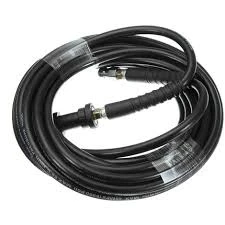rsx power steering hose replacement
RSX Power Steering Hose Replacement A Comprehensive Guide
Power steering is one of the modern conveniences that greatly enhances driving comfort and control. For Honda RSX owners, maintaining the power steering system is essential for preserving vehicle performance. Over time, power steering hoses can wear out or become damaged, leading to leaks, increased steering effort, and potential steering failure. This article will guide you through the steps necessary to replace the power steering hose in your RSX, ensuring smooth and reliable steering once again.
Understanding the Power Steering Hose
The power steering hose is a vital component of the power steering system, consisting of high-pressure and low-pressure hoses. The high-pressure hose carries fluid from the power steering pump to the steering gear, while the low-pressure hose returns the fluid to the reservoir. Over time, exposure to heat, chemicals, and environmental factors can cause these hoses to crack, swell, or rupture.
Symptoms of a Failing Power Steering Hose
Before diving into the replacement process, it's essential to recognize the symptoms of a failing power steering hose. Common indicators include
1. Fluid Leaks Puddles of reddish-brown fluid underneath your vehicle can signal a leaky power steering hose. 2. Difficult Steering Increased effort required to turn the steering wheel suggests a problem with fluid flow. 3. Noisy Steering Unusual whining or groaning noises while steering often indicate low fluid levels, potentially caused by a leak.
If you notice any of these symptoms, it’s crucial to address the issue promptly to prevent further damage to the steering system.
Tools and Materials Needed
Before starting the replacement process, gather the following tools and materials
- New power steering hose (high-pressure and/or low-pressure as required) - Power steering fluid - Wrenches and sockets (appropriate sizes for your vehicle) - Hose clamps (if necessary) - Screwdriver - Pliers - Shop towels - Container for catching fluid
Step-by-Step Replacement Process
1. Safety First
Ensure your vehicle is parked on a level surface, and engage the parking brake. It’s a good idea to wear safety glasses and gloves to protect yourself during the process.
2. Locate the Power Steering Hose
rsx power steering hose replacement

Open the hood and locate the power steering hose. Follow it from the power steering pump to the steering rack. Depending on your RSX model, you may need to remove some components for easier access.
3. Drain the Power Steering Fluid
Place a container underneath the power steering system to catch any fluid that may leak out during the replacement. Remove the power steering reservoir cap and, using a syringe or turkey baster, suck out as much fluid as possible.
4. Disconnect the Old Hose
Use the appropriate wrench to loosen and disconnect the fittings on both ends of the power steering hose. Be prepared for some residual fluid to spill out. Take care not to damage any surrounding components.
5. Install the New Hose
Take your new power steering hose and carefully connect it to the fittings. Ensure that each connection is tight and secure, but avoid overtightening, which can cause damage. If your model uses hose clamps, make sure they are properly fastened.
6. Refill the Power Steering Fluid
Once the new hose is in place, refill the power steering reservoir with the appropriate type of power steering fluid. Refer to your owner’s manual for specifications to ensure compatibility.
7. Bleed the Steering System
To remove any air pockets from the system, start the engine and turn the steering wheel from lock to lock several times. Check the fluid level and add more if necessary. Keep an eye out for any leaks in the new hose.
8. Test Drive
Finally, take your RSX for a short test drive. Pay attention to the steering response and listen for any unusual noises. If everything feels normal and there are no leaks, you've successfully replaced the power steering hose.
Conclusion
Replacing the power steering hose in your Honda RSX can seem daunting, but with the right tools and guidance, it can be done effectively. Regular maintenance of your power steering system, including timely hose replacements, will ensure smooth and effortless steering for years to come. If at any point you feel uncomfortable with the procedure, don’t hesitate to consult a professional mechanic.
-
Ultimate Spiral Protection for Hoses & CablesNewsJun.26,2025
-
The Ultimate Quick-Connect Solutions for Every NeedNewsJun.26,2025
-
SAE J1401 Brake Hose: Reliable Choice for Safe BrakingNewsJun.26,2025
-
Reliable J2064 A/C Hoses for Real-World Cooling NeedsNewsJun.26,2025
-
Heavy-Duty Sewer Jetting Hoses Built to LastNewsJun.26,2025
-
Fix Power Steering Tube Leaks Fast – Durable & Affordable SolutionNewsJun.26,2025

